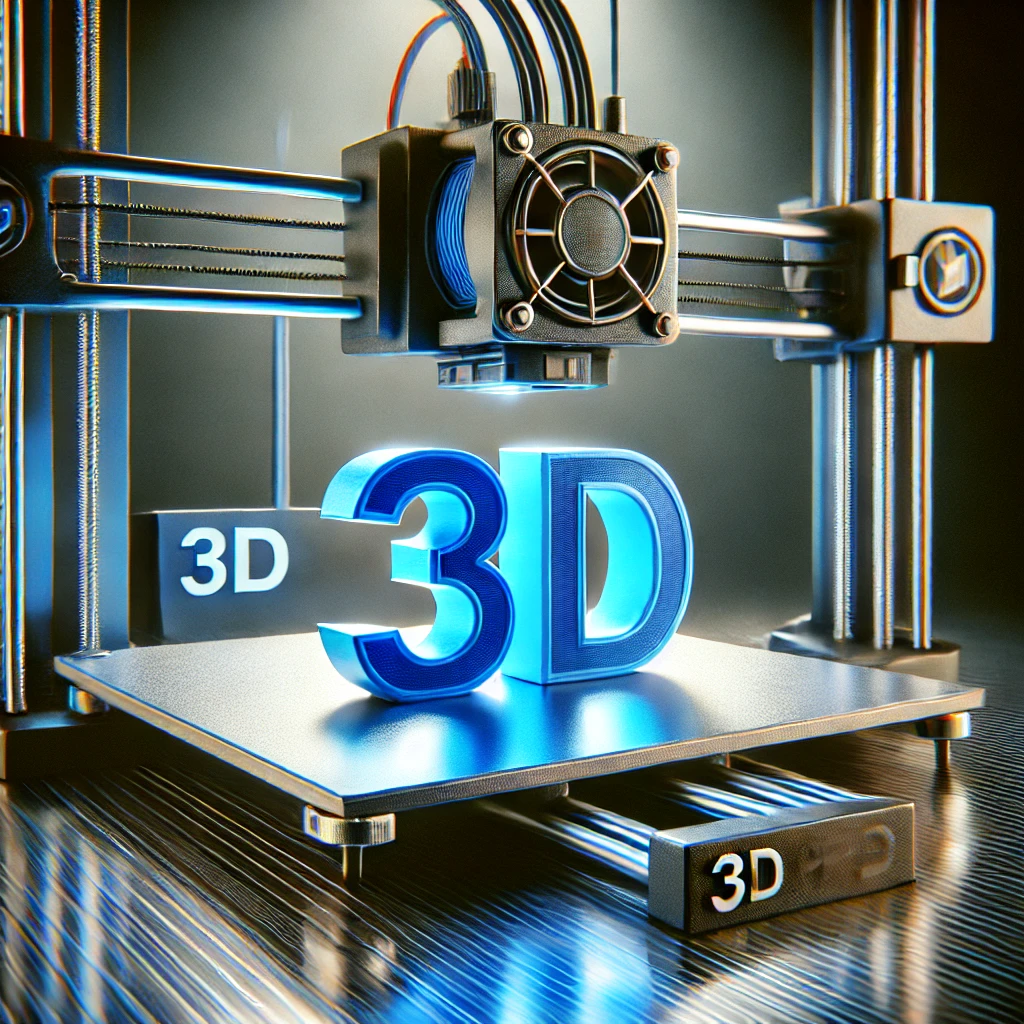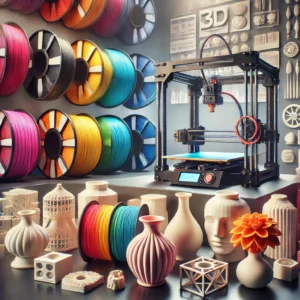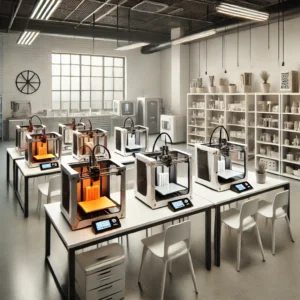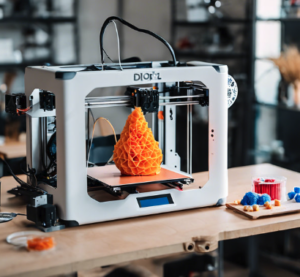Exploring the Latest 3D Printing Equipment for Precision Manufacturing

3D printing has revolutionized manufacturing, enabling rapid prototyping and production across industries. With technology advancements, various 3D printing equipment is available, offering features tailored to specific materials, printing speeds, and precision levels. This article covers different 3D printing machines, from beginner models to high-end metal printers, costs, applications, and essential features for 3D printing services.
Types of 3D Printing Equipment
Choosing the right 3D printing equipment depends on specific needs, from material compatibility to production volume and precision. Here’s a breakdown of key categories:
1. Desktop 3D Printers for Home and Small Business Use
Desktop 3D printers are ideal for beginners and small businesses due to their affordability and ease of use. They handle materials like PLA, ABS, and nylon, suitable for basic prototyping and small parts manufacturing.
- Snapmaker Artisan: A versatile 3-in-1 device for 3D printing, CNC, and laser engraving, priced at $2,999.
- QIDI Tech Q1 Pro: High-speed desktop printer, offering speeds up to 600mm/s, available for $449.
These models are cost-effective for prototyping, product design, and small-scale production.
2. Industrial-Grade 3D Printers for Large-Scale Manufacturing
Industrial 3D printers offer larger build volumes and support a wider range of materials, including metals. These printers suit industries requiring high precision, durability, and material versatility.
- Modix BIG-180X: Featuring a massive build area of 1800 x 600 x 600 mm, this machine is excellent for large parts, priced at $15,500.
- Markforged Metal X: An advanced metal 3D printer with a focus on producing durable metal parts with high precision, priced around $100,000.
These printers are used in industries such as automotive, aerospace, and heavy manufacturing.
3. Metal 3D Printers for High-Strength Applications
Metal 3D printers are highly sought after in sectors like aerospace, healthcare, and automotive due to their ability to produce lightweight, durable components with complex geometries. The costs for these machines are generally higher, reflecting their advanced technology and precision.
- Wayland Additive Calibur3: Equipped with Wayland Connect software, allowing real-time monitoring and control of metal printing processes, making it a favorite in aerospace and defense industries.
Metal 3D printing equipment supports materials like titanium, aluminum, and steel, ideal for parts needing high strength-to-weight ratios.
Key Features to Look for in 3D Printing Equipment
Selecting 3D printing equipment involves understanding essential features that affect the output quality, speed, and operational efficiency. Here are core factors to consider:
1. Material Compatibility
Different 3D printers support various materials, from plastics and resins to metals and ceramics. For instance, the Metal X 3D printer specializes in metal printing, making it ideal for parts that require durability and corrosion resistance.
2. Build Volume
The build volume determines the maximum size of an object a printer can produce. For industrial applications, machines like the Modix BIG Meter offer build sizes up to 980 x 1000 x 1000 mm, ideal for large, single-part manufacturing.
3. Printing Speed and Precision
Printing speed and resolution impact production timelines and detail quality. High-end equipment, such as the QIDI Tech X-Max 3, boasts up to 600mm/s speed, ensuring rapid prototyping without compromising detail.
4. Software and Remote Monitoring
Advanced software enhances productivity by enabling remote monitoring, real-time notifications, and performance analysis. Wayland Additive’s Wayland Connect software, for instance, allows users to oversee metal prints remotely, optimizing workflow efficiency.
Applications of 3D Printing Equipment Across Industries
1. Aerospace
Aerospace companies leverage 3D printing for lightweight parts with complex geometries, such as turbine blades and structural components. Metal 3D printers, like the Velo3D Sapphire, play a crucial role here, producing durable parts that withstand high-stress environments.
2. Healthcare
3D printing has transformed healthcare by enabling customized implants and prosthetics. Amnovis, a Belgium-based company, has used titanium 3D printing to manufacture over 50,000 implants, significantly reducing production time and cost.
3. Automotive
Automotive manufacturers utilize 3D printing for rapid prototyping and small-batch production of complex components. Equipment like the Markforged Metal X is used to produce strong, lightweight parts that enhance fuel efficiency.
Cost of 3D Printing Equipment
Pricing varies widely based on capabilities, materials, and precision. Here’s an overview of estimated costs:
| Printer Type | Example Models | Approximate Cost |
|---|---|---|
| Desktop Printers | Snapmaker Artisan, QIDI Q1 | $449 – $2,999 |
| Industrial Printers | Modix BIG-120X, Metal X | $7,500 – $100,000+ |
| Metal 3D Printers | Metal X, Velo3D Sapphire | $50,000 – $250,000+ |
Factors Affecting Metal 3D Printer Cost
- Material Type: Metal 3D printers require specific materials like stainless steel or titanium powder, which can raise operational costs.
- Software: Advanced monitoring and diagnostic software, as seen in Wayland Connect, add to both purchase and ongoing maintenance expenses.
Advantages of Using 3D Printing Equipment
3D printing equipment offers numerous benefits for businesses looking to innovate, streamline production, and reduce costs. Key advantages include:
- Reduced Waste: 3D printing is an additive process, meaning materials are only used where needed, minimizing waste.
- Enhanced Design Freedom: Complex designs, previously impossible or too costly with traditional manufacturing, are achievable with 3D printing.
- Lower Costs: While initial costs can be high, 3D printing reduces the need for molds and tools, lowering production costs in the long run.
Choosing the Right 3D Printing Service
If purchasing equipment isn’t feasible, many businesses opt for a 3D printing service to access cutting-edge technology without the overhead. Metal 3D printing services, in particular, offer businesses the ability to test parts in various materials, such as titanium or stainless steel, before committing to in-house equipment.
Key Considerations When Selecting a 3D Printing Service
- Material Options: Ensure the service offers the required materials.
- Turnaround Time: For rapid prototyping, a quick turnaround is essential.
- Customization Capabilities: Some services offer tailored options for specific industries, like healthcare and automotive.
The Future of 3D Printing Equipment
The market for 3D printing equipment continues to evolve, with ongoing advancements in software, material compatibility, and precision. These developments make 3D printing more accessible for diverse industries, from aerospace to healthcare. Whether you’re looking to purchase equipment or explore 3D printing services, understanding the available options and selecting the right model can position your business at the forefront of innovation.
Visit our other website: https://synergypublish.com





